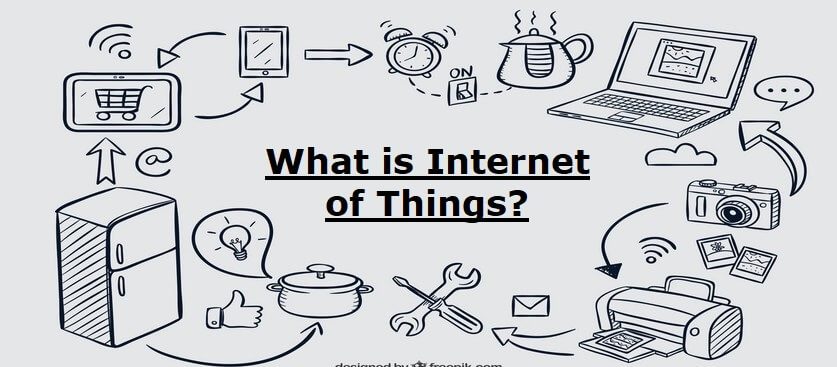- 10 Dec 2018
- Posted by vedanshinfoway
- Internet of Things
- 0 Likes
Internet of things is a very popular word nowadays. But what does it mean? Internet of things means “the connection of computing devices in everyday objects via the internet”. This does not include desktop pcs, laptops, etc. It consists of other objects such as television, fridge, air conditioners, and cars and so on. They gather information, analyse them and act accordingly. This data can be shared with other connected devices so that they can also use it to make their decisions. We are already using IoT in our everyday lives. Amazon’s Echo, Google Home and Alexa are some of the smart home assistants that make it easier to play music, set timers, appointments, etc.
How do IoT devices connect?
IoT devices can connect through different methods. Homes and offices use standard WiFi or Bluetooth. Some devices can use LTE or satellite connections to communicate. However, most of them will use standard connection options.
Applications of IoT
There are various applications of IoT. Some of them are listed below:
Smart Home
A smart home can cut down energy consumption in a house by automatically switching off lights in empty rooms. If you want your lights or AC to be switched on before you arrive home, a smart home can help you do that. If you are not at home and want to allow someone in your home for a brief amount of time then you can automatically unlock the doors from wherever you are. A smart fridge can let you know the groceries you need at home. It can also help you figure out what you can make from available items.
Wearables
There are a lot of smart wearables. They can monitor your heartbeat, blood pressure, etc. Some smart watches can also make calls.
Smart city
By connecting various traffic lights around the city via IoT, they can be regulated. This will help to reduce traffic jams. It can help divert traffic in case of an accident or due to damaged roads. Water and electricity supply can also be regulated properly.
Smart car
A smart car is a combination of IoT and artificial intelligence. It can reduce the number of traffic accidents as cars don’t get tired or drunk. When you are running late, a smart car can automatically send a message to your workplace.
Smart farming
By putting sensors on farms to analyse soil quality, IoT can help by gathering all the data from them. This data can be further analysed to improve soil quality as well as plant quality.
Advantages of IoT
Internet of things increases efficiency in work by analysing multiple data. They analyse data and provide with accurate solutions which can be further used to cut down energy consumption and cost. It can also help reduce waste as well as save time, money and effort.
Disadvantages of IoT
Since everything is connected via the internet, IoT poses a huge security problem. If the connections are not secured properly, data can be easily hacked and misused. Personal information can also be stolen.
Another major problem is data storage. It is important that all the data that is gathered is processed and stored properly.
Conclusion
IoT is still a developing technology. One of the biggest problems for connecting different devices is incompatible hardware and embedded chips.
According to an analysis by Gartner, around 8.4 billion IoT devices were in use in 2017 and this number is likely to increase up to 20.4 billion by 2020. Two-thirds of the devices will be found in China, North America and Western Europe.
See Also
Introduction to Cryptocurrency


Post a Comment